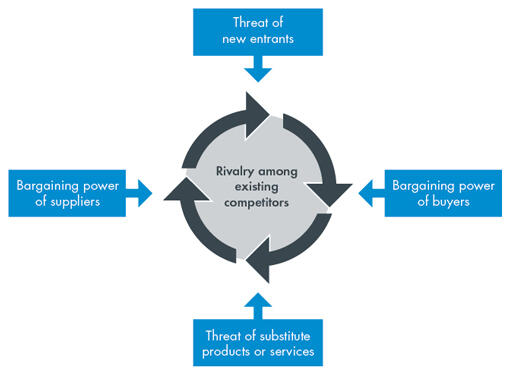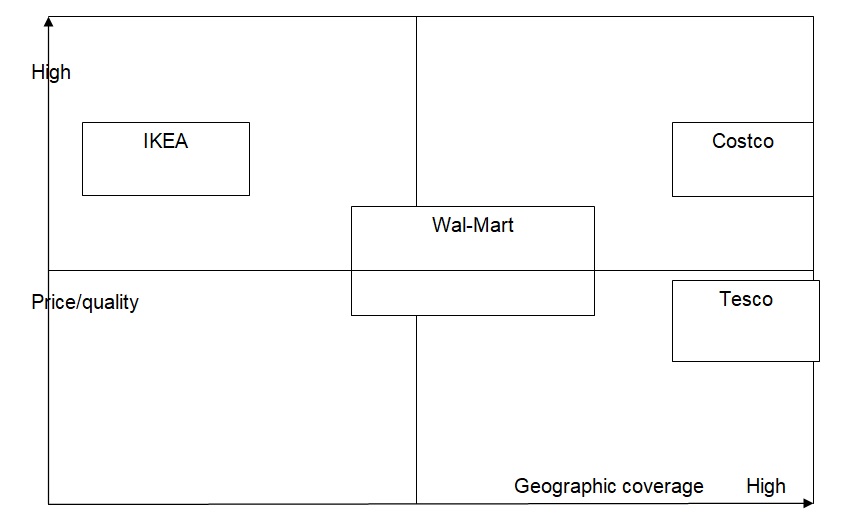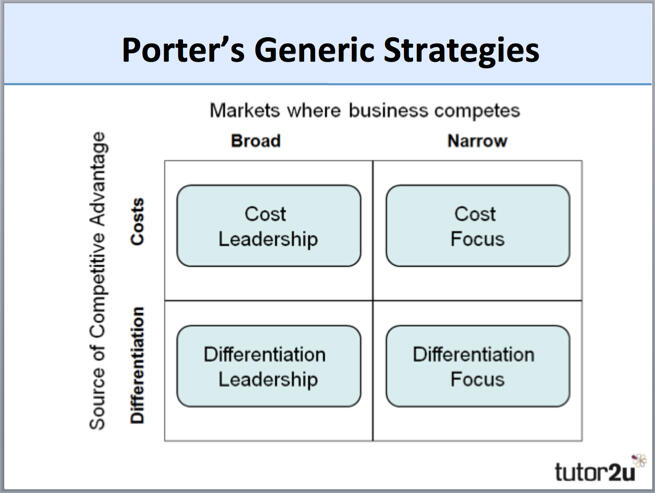Costco Wholesale is one of the leading American corporations, operating a chain of warehouse clubs for its members. Founded in 1976, this company has experienced massive growth, and currently, it operates in various countries in North America, Europe, and parts of Asia. The management of this company has been keen on understanding customers’ needs and meeting them in the best way possible as a way of managing competition. Currently, Costco is the world’s second-largest retailer (Boone & Kurtz, 2015). It was voted the most preferred retailer for organic foods, prime beef, wine, and rotisserie chicken. The company’s revenue, net income, total assets, total equity, and the number of employees have been on the rise over the past five years, which is a clear demonstration that it has been registering impressive growth. The positive indexes show that this company has managed to understand external forces in the market and has aligned internal factors accordingly to ensure that it achieves the desired level of success. In this paper, the researcher seeks to discuss external and internal environmental factors at Costco to develop strategies that can enable the company to achieve a competitive edge over its rivals.
External Analysis
The retail industry is one of the most competitive sectors of the economy not only in the United States but also in other parts of the world. According to Rothaermel (2016), the ability of a firm to achieve success in such a market depends on its understanding of external forces and the capacity to adjust its internal operations appropriately. In most cases, a firm may not have the capacity to influence these external forces in the market. It only needs to redefine its internal structures to ensure that it achieves the intended goals.
Industry Structure
One of the factors that the management of Costco Wholesale needs to consider within the external environment is the industry structure. It focuses on the size and number of rivals that a firm has to compete against in a given market. The wholesaling and retailing industry is one of the most competitive ones in North America, Europe, and parts of Asia. Wal-Mart is the largest and most powerful rival that this company has to deal with in the global market. As Turban et al. (2018) observe, Wal-Mart is the largest retailer in the world and the most popular in the United States. It means that Costco has to find a way of overcoming the stiff competition that this firm poses. In the European market, the company has to deal with market rivalry from some of the dominant brands such as Tesco, Aldi Edeka Group, and Schwarz Group. Other major players in the industry include Ahold Delhaize, Centers Destributeurs, IKEA Group, Mercadona SA, Coop Group, and H&M Hennes (Boone & Kurtz, 2015). These retailers have strong brands in Europe and have a large base of loyal customers. In parts of Asia where this firm operates, especially in China and Japan, other strong market rivals exist. The company must find ways of ensuring that they overcome the stiff market competition by delivering high value to its clients at the most competitive cost possible.
Competitive Forces
The management of Costco would need to understand the competitive forces that the firm has to deal with to achieve success in the market. According to Rothaermel (2016), Porter’s five forces framework helps in identifying these factors in a way that makes it possible to develop effective management strategies. These forces include the intensity of industry rivalry, the threat of potential entrants, and the threat of substitute products, the bargaining power of suppliers, and the bargaining power of buyers as shown in figure 1 below. It is important to discuss each of these factors to understand how Costco can deal with them.

One of the first factors that the management of this company should evaluate is the level of market rivalry among existing competitors. In this industry, the challenge is relatively high. The analysis conducted above has identified Wal-Mart as the main competitor for this company. Other major rivals include Tesco, Aldi Edeka Group, and Schwarz Group. Besides these large corporations, Costco also faces stiff competition from small and mid-sized companies offering the same products in the same market. This firm needs a unique strategy to overcome this challenge. The threat of new entrants is another major challenge. Morden (2016) explains that the ease with which other companies can access this market also affects the capacity of this firm to achieve success. In the United States and most of the foreign markets where this company operates, it is easy for new companies to emerge as long as they follow laws and regulations set by respective governments. As such, the level of competition can get stiffer than it is currently.
The bargaining power of suppliers is an issue that the management should consider. In this industry, wholesalers and retailers have a wide range of options whenever they want to stock different products. As such, Costco may not worry much about the power of suppliers. However, the company should ensure that there is a fruitful relationship with these suppliers. The power of customers is another issue. Rothaermel (2016) explains that when customers have a wide variety of options when they plan to purchase something, then they will become more demanding. Costco has to deal with this problem because of the numerous options that its customers have. The fifth factor is the threat of substitute products. When products that a firm offers can easily be substituted, then it loses its bargaining power. Fortunately, for Costco, this threat is low based on the industry within which it operates.
Strategic Groups
A strategic group is a useful model that helps in classifying companies based on the similarity of specific business strategies and models that they use to achieve a competitive edge over their rivals in the market. As Lasserre (2017) observes, it is often common to find cases where a firm settles on one or two strategies that they believe can offer them the greatest advantage in the market to attract more customers. Figure one below identifies the position of Costco in terms of the strategy that it takes to achieve competitiveness in the highly competitive market. Figure 2 below shows the position of the firm in comparison to other firms

Internal Analysis
When the management has conducted a detailed analysis of the external market, the next step is to analyze the internal environment. The internal analysis helps to understand the core competencies of the firm, resources that it has to achieve specific goals, and capabilities as it seeks to achieve specific goals in the market. According to Turban, Whiteside, King, and Outland (2017), when conducting internal analysis, it is important to take into consideration a firm’s strengths and weaknesses which directly define its capacity to take advantage of opportunities in the market while at the same time dealing with threats that may emerge.
Resources
Resources that a company has defined its capacity to undertake different activities in the market. According to Rothaermel (2016), one of the most important resources for a firm is its financial capacity. It needs the resource to fund research and development activities, expand to new markets, and in an effective remuneration of its workforce. Costco is a financially empowered firm, especially because of its impressive performance within the past five years. Its financial power has enabled it to expand to new markets through mergers and acquisitions. The firm also has a team of highly skilled employees who understand how to meet the diversified needs of customers in the global market. According to Turban et al. (2018), the success of a firm depends on the skills and capabilities of its employees. Firms are currently investing heavily in their human resources because they directly influence the capacity of a firm to succeed based on their performance. Costco has been hiring talented workers and giving them attractive remunerations to limit the rate of employee turnover. The team of dedicated and skilled management units is considered another important resource that can help a firm to achieve success in the market. This company has managed to create a team of highly experienced, committed top-level managers who understand how to manage various market forces.
Capabilities
The capabilities of a firm define its capacity to undertake a given activity in an efficient manner that creates a competitive edge over its rivals in the market. It focuses on the major strengths of a firm within a given industry (Turban et al., 2017). One of the main areas that Costco has proven to be efficient in the provision of fresh organic food materials. In the United States, the company has become popular among customers keen on purchasing organic vegetables, fruits, and cereals. In a market where many people are keen on consuming organic food products, this factor makes Costco one of the preferred destinations for the majority of Americans. The company has also proven to be effective in providing quality beef to its customers. It has been working closely with farmers around the world to ensure that they have access to quality products that is fresh from the farm. The management should use these unique capabilities to position the company as one that uniquely meets customers’ needs and keen on protecting their health.
Core Competencies
The core competencies of a firm also focus on its strengths in the market. According to Rothaermel (2016), core competency refers to a combination of skills and resources that enable a firm to stand out in the market and achieve competitiveness, especially in an industry with a high rate of rivalry. Superior customer service is one of the main core competencies of this firm. A detailed review of the firm’s performance shows that it has focused on meeting the emerging needs of its customers. Its decision to hire a diversified workforce was deliberately meant to ensure that it understands customers’ needs in the market. The company has also been keen on understanding market trends, especially the emerging tastes and preferences of its customers. These core competencies will enable this company to overcome the still competition that it faces both locally within the United States and in the foreign market, especially in Europe and parts of Asia.
Competitive Advantage
When a firm realizes that it is operating in a highly competitive business environment, it is often advisable to define a path that can enable it to outsmart its rivals in the market. Lasserre (2017) advises that it is important for a firm to focus more on what it can deliver best to its customers in a way that its rivals cannot. In this section, the focus is to identify ways in which this company can deliver unique value to its customers.
Firm Performance
The management should start by looking at the performance of the firm against that of its main rivals. According to Turban et al. (2018), Costco is the second-largest retailer in the world, after Wal-Mart. It means that this company’s performance is impressive despite the stiff market competition. It understands customers’ needs and it is doing everything to meet them in the best way possible. The financial performance of this firm is also impressive. Its total assets, net income, and operating avenues are on the rise. These indices show that the firm is making positive progress in the market towards achieving the level of success that it deserves. The records of the company also show that its number of employees worldwide is increasing, which reaffirms the impressive performance.
Business Models
Selecting an appropriate business model is critical in enabling a firm to achieve success in the market. Porter’s Generic Strategies identifies four potential strategies that a firm can use to achieve a competitive edge over its rivals in the market, as shown in figure 3 below. The possible strategies include cost leadership, cost focus, differentiation leadership, and differentiation focus. A firm can decide to choose one or two of the suggested strategies based on its core competencies and business interests.

Costco should consider embracing differentiation leadership as the most appropriate strategy to achieve a competitive edge. The strategy is appropriate because its main market rival, Wal-Mart, has embraced cost leadership. Using differentiation will require this firm to embrace the unique approach of delivering its products to customers. Given the fact that it cannot change the nature of products it offers, it can adjust its packaging strategies, and customer service approaches to achieve uniqueness in the market.
Conclusion
Costco is one of the leading retailers in the world with branches in North America, Europe, and parts of Asia. The management of the company has been keen on ensuring that the company achieves consistent and sustainable growth in the market despite the stiff competition. The firm has invested a lot in employee empowerment as a way of achieving a competitive edge over its rivals. It has embraced differentiation as a way of offering unique quality products to the market. The study emphasizes the need for this firm to use its strengths in the market to take full advantage of the opportunities available in the local and international markets while at the same time overcoming its weaknesses and threats within this industry. It should also embrace innovation in its operations.
References
Boone, L. E., & Kurtz, D. L. (2015). Contemporary marketing, update 2015. New York, NY: Cengage Learning.
Lasserre, P. (2017). Global strategic management. London, United Kingdom: Palgrave.
Morden, T. (2016). Principles of strategic management (3rd ed). New York, NY: Routledge.
Rothaermel, F. (2016). Strategic management (3rd ed). London, United Kingdom: McGraw-Hill Education.
Turban, E., Outland, J., King, D. R., Lee, J. K., Liang, T. P., & Turban, D. C. (2018). Electronic commerce 2018: A managerial and social networks perspective. Cham, Switzerland: Springer.
Turban, E., Whiteside, J., King, D., & Outland, J. (2017). Introduction to electronic commerce and social commerce. Cham, Switzerland: Springer International Publishing.